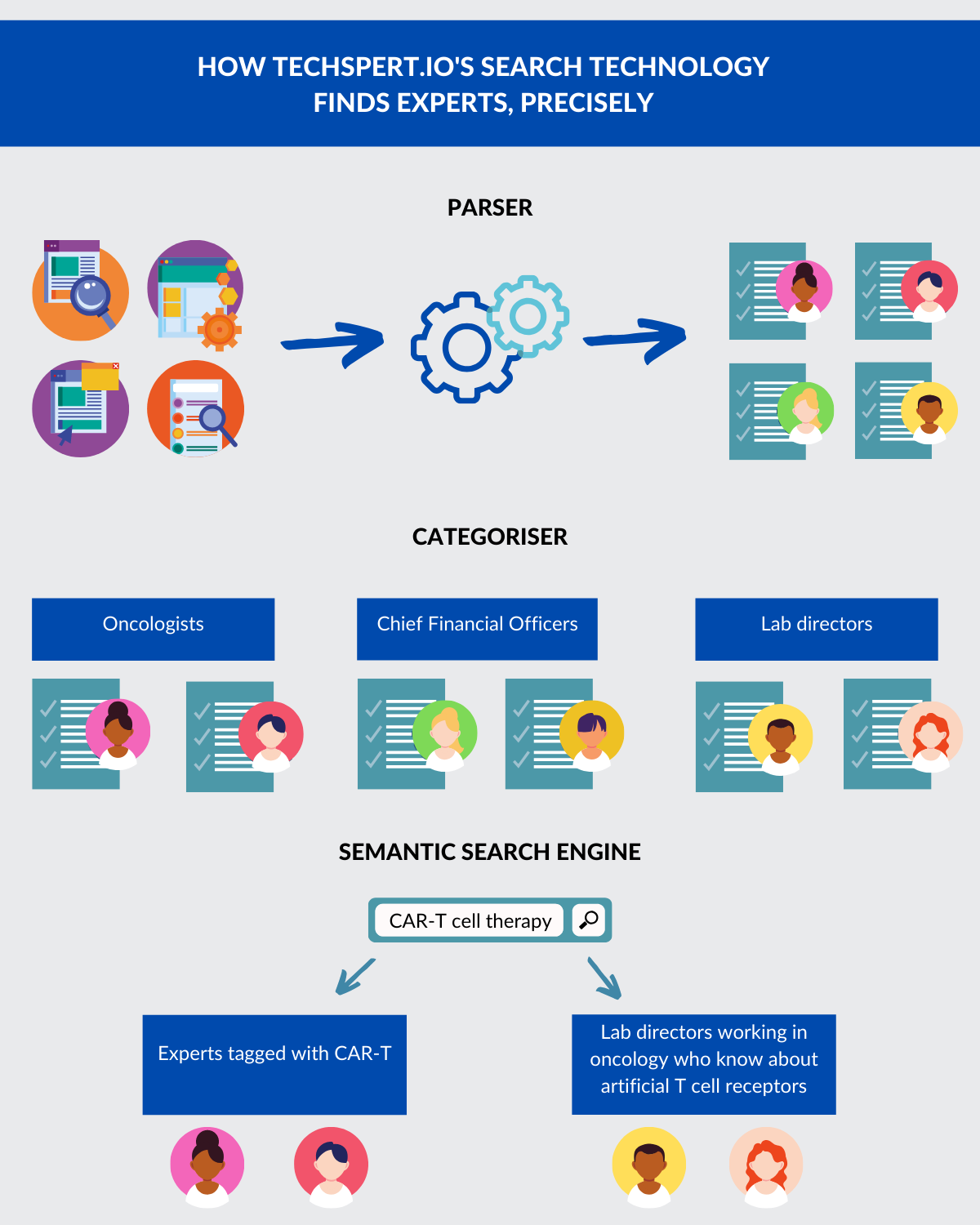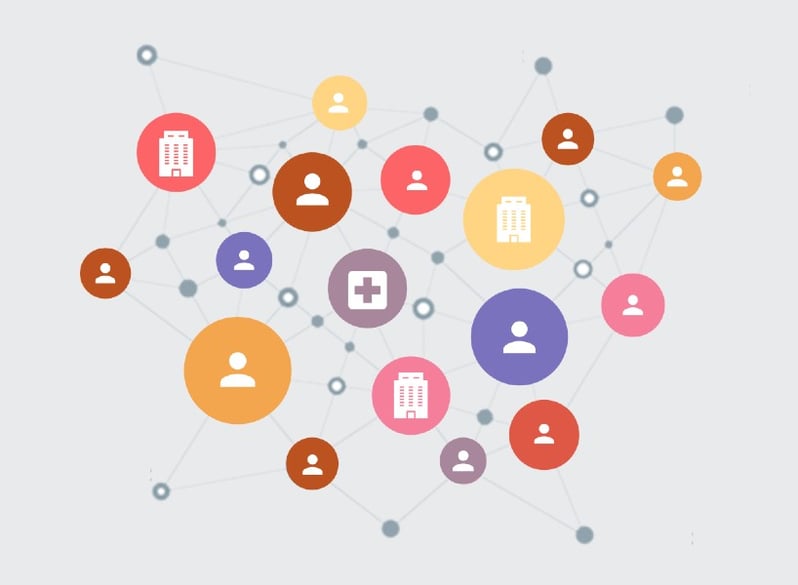Discover the advancements techspert.io has made to its Knowledge Graph to map the world’s knowledge...
In recent years, many companies have jumped on the AI bandwagon, claiming that they use it to solve business needs. We often hear terms like “machine learning”, “AI”, and “deep tech” to support these claims.
While plenty of these organizations do leverage the power of AI, a whole lot more of them don’t. Now, the purpose of this blog post isn’t to point fingers, but rather to give you a peek of what’s under the hood of Techspert’s AI search tech.

We’ve developed AI-driven search technology which trawls through billions of publicly available online data points to find world-leading experts. We then match these experts with organizations who need their specialist, primary insight. Our tech enables us to connect organizations with the right experts, at the right time, always.
The three core principles of our tech are precision, speed and volume. Be warned: things might get a little technical, but I’ll try not to get too carried away.
Let’s dive in!
Pinpoint precision
One of our core innovations is our Parser. It comprises a suite of algorithms which can take any page on the web, comprehend its content, and extract useful expert profiles from it. Unlike other companies in our space, we’re not restricted to social media sites, marketing lists, or specific databases.
The parser does this using a combination of natural language processing (a branch of AI concerning the comprehension of human language by computers) and machine vision (the interpretation of visual media by computers).
Our Categoriser then assigns precise categories to experts’ work. This would usually require a smart human with domain-specific knowledge, but our system is fully automatic and takes mere milliseconds.
Next, we’ve built a Semantic Search Engine on top of our database of expert profiles. This enables us to accurately match experts to a request. For example, if an organization is looking for experts in CAR-T cell therapy (a kind of immunotherapy for combating cancer), our search engine produces not just experts tagged with “CAR-T”, but also lab directors working in oncology who know about artificial T cell receptors.
That was a lot of information to digest so, using the example above, I put together this diagram to try and help.

Hopefully this image helps illustrate how our AI search technology finds experts with pinpoint accuracy.
Now that we’ve covered precision, let’s dash to speed!
Supersonic speed
When organizations need insight, they need it fast and they need it from today’s experts, not yesterday’s. That’s why we put a lot of effort into ensuring that our AI technology sources the right experts swiftly.
Our tech team has developed an internal Knowledge Graph for recording the relationships between experts, institutions, online media, and semantic concepts. This gives us a global, real-time overview of the whole knowledge landscape. It enables us to see which people are having the greatest influence in their field and to spot trends and growth areas over time. Upon receiving a request for experts, we can rapidly identify the thought leaders in the field and connect them with the organizations who seek their knowledge.

Knowledge graphs are a great way of mapping the knowledge landscape and understanding the relationships between the different stakeholders.
With precision and speed out of the way, let’s round things off by looking at volume.
Vast volume
The internet is a large place, containing an abundance of valuable information, but it also has a lot of redundant material. It’s vital to be able to sift through this data at speed to ensure that we’re always able to find the largest possible number of experts for our customers.
Our Crawler is a computer program that scans the web, reading and indexing everything it finds. Basic web crawlers jump from link to link at random, trying to hit as many pages as possible. For the indexing challenge that we face, we had to develop a more intelligent system.
Reinforcement learning is a subfield of machine learning in which computers learn which actions they should take within an environment, in order to maximize a predefined reward function. As it trawls the web, our Crawler learns which paths it should take through the mass of information, in order to find the most useful data for producing accurate, comprehensive expert profiles.

Thank goodness for crawlers! Imagine having to manually sift through data on the internet to find experts.
At the beginning of this blog post, I set out to share how our AI search technology finds experts others can’t by exploring the three core principles of our tech:
- Precision – fueled by our Parser (which takes any page on the web, comprehends its content, and extracts useful expert profiles), our Categoriser (which assigns precise categories to experts’ work) and our Semantic Search Engine (which enables us to accurately match experts to a request), our AI tech sources experts accurately.
- Speed – our knowledge graph gives us a real-time overview of the knowledge landscape enabling us to swiftly identify the world’s best thought-leaders.
- Volume – thanks to our Crawler, we’re able to scan the far corners of the web to produce comprehensive, accurate expert profiles.
And that brings us to the end. I hope you’ve enjoyed learning about how our search technology leverages the power of AI to find the world’s leading experts to help organizations unlock insight.





